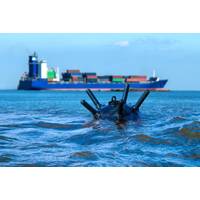
Maritime Risk Symposium 2024 – Great Power Competition and Gray Zone Engagement
conflict, making attribution and response difficult. Artificial intelligence (AI) offers promising solutions to enhance the detection, analysis and mitigation of gray zone cyber threats in the maritime sector. This panel will explore the potential of AI to counter tactics like GPS spoofing, Automatic Identification System manipulation and attacks against port infrastructure. It will examine how machine learning-based systems can identify anomalies in network behavior, detect subtle patterns associated with gray zone activities and automate threat intelligence analysis. The panel will also address the

Saildrone Launches First Next-gen Surveyor USV
the first vehicle launched of many that will be produced here in Alabama,” said Saildrone founder and CEO Richard Jenkins. “Everyone at Saildrone is very proud to be supporting the US Navy and contributing to our defense and national security.”The Surveyor fuses radar, cameras, automatic identification system (AIS), and advanced machine learning to deliver comprehensive situational awareness remotely from anywhere in the world. Saildrone offers solutions for challenges like IUU fishing, counter smuggling, and safety of life at sea (SOLAS) missions. The Surveyor detects vessels at sea,
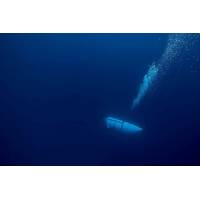
As the Clock Ticks on the Titan Sub, an Expert Explains What Safety Features a Submersible Should Have
ensured instant two-way communication and a higher data exchange rate. But these cables can get entangled with potential hazards at a shipwreck site.As such, tethers are mostly used for unmanned vehicles; manned submersibles prefer to trust the pilot. Also, GPS, portable satellite phones and automatic identification systems can’t be used underwater. These tools use electromagnetic waves that don’t propagate deep underwater (although they could be used on the surface).Some submarines are equipped with a distress beacon, the equivalent of an emergency position indicating radio beacon (EPIRB)

Floating Offshore Wind: New Seascape, New Challenges
.” Wise said the NSRA tells the Coast Guard what objects will be placed in the waterway. He added that various states may also require additional permits or approvals, particularly within a state’s three-mile offshore ocean boundary.Traffic analysis is done using AIS – automatic identification systems – data. AIS tells what kind of ships are in a proposed WEA and the vessels’ locations.The NSRA outlines the steps needed to avoid and minimize navigation conflicts. This is critical not just for safety but, Wise added, because it impacts the layout of the project within
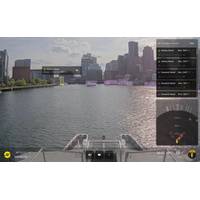
Sea Machines Debuts AI-ris Computer Vision for Commercial Vessels
or animals, to those very large, like another ship,” said Trevor Vieweg, CTO, Sea Machines. “With the ability to detect, classify and geolocate such targets via optical sensors, AI-ris augments and surpasses the capabilities of existing marine sensor technologies, like radar and automatic identification system (AIS), enabling greater performance and achieving the highest levels of safety. In the future, this technology may also help responders detect marine oil spills.”AI-ris is commercially available now and can be installed aboard existing vessels, as well as new-builds
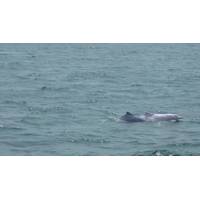
Unmanned Vessels Help to Protect Threatened Marine Lives in China
with Pearl River Estuary Chinese White Dolphin National Nature Reserve.Besides population exploitation, USV technologies also play significant roles in guarding the natural reserve. An autonomous surveillance and rescue vessel is also used for daily patrolling along the set route. Radar and AIS (Automatic Identification System) are applied to real-time monitoring, automatically recording vessels' sailing paths and alerting suspected vessels. Natural reserve protection has become more intelligent and efficient with advanced USV technologies.The Autonomous Surveillance and Rescue Vessel is Expelling a
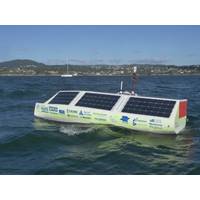
Solar-powered Autonomous Vessel Crosses the Atlantic
powers the drive, plus the steering actuator, electronics and bilge pumps. The steering, communication, hardware integration, navigation and energy management on board are all managed by Mahi’s self-developed USV software. The boat communicates using an onboard satellite modem, GPS and automatic identification system.Mahi Two’s oceangoing adventure started off well, despite spells of bad weather. “The first few months were flawless. Other than adjusting speed to compensate for reduced solar power production, Mahi took on stormy, cloudy days at sea with no problem,” Note said
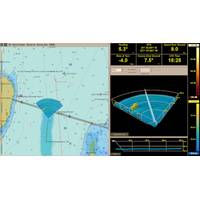
FarSounder, Navtor Partner
now the option to have matching map displays on both their ECDIS and FarSounder radar system," said Bjørn Kristian Sæstad, CBDO OEM/SDK at Navtor.“In this release, users will not only have support for NAVTOR ENC chart data included, but they will also be able to bring up Automatic Identification System (AIS) targets and Automatic Radar Plotting Aid (ARPA) targets in the Chart Viewer” said Cheryl M. Zimmerman, CEO, Farsounder. “Support for new NMEA message types associated with AIS and ARPA targets has been added and are easily displayed on the FarSounder stand-alone
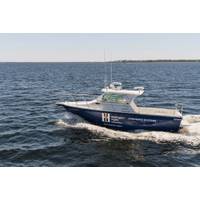
Huntington Ingalls Industries Debuts Proteus USV
milestone in our commitment to advancing our unmanned systems capabilities and our continued partnership with Sea Machines to further develop USV solutions for our customers.”For the demonstration, HII’s Proteus USV was equipped with commercial perception sensors, including GPS, automatic identification system, depth transducer, radar and a camera enabling a 360-degree field of view. HII deployed a separate 51-ft.dive boat during the demonstration to illustrate SM300 system’s off-the-shelf solution, including its obstacle avoidance capability and adherence to the International Regulations



 February 2024
February 2024





